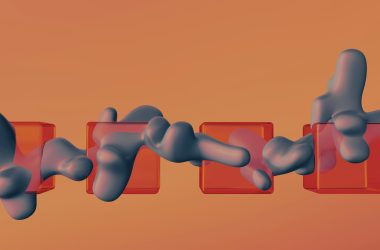Peyronie’s disease and Erectile Dysfunction are sexual conditions that are commonly associated with adult males. However, it is crucial to recognize that these issues can also affect teenagers, albeit less frequently. Recent data shows that the number of teenagers experiencing ED and PD is increasing. But why is that? Well, there are numerous reasons that can contribute to the development of ED and Peyronie’s disease in teens. In this article, we will explore the causes and treatment options of Erectile Dysfunction and Peyronie’s disease. We will also try to shed some light on the insidious impacts of these issues on teenagers.
Causes of Erectile Dysfunction and Peyronie’s Disease in Teenagers:
Erectile Dysfunction in Teenagers:
The inability to obtain or sustain an erection strong enough for sexual activity is referred to as Erectile Dysfunction, or ED. What causes Erectile Dysfunction in teens? In teenagers, psychological factors often play a significant role in causing ED. Performance anxiety, stress, depression, or body image issues can contribute to erectile difficulties. Hormonal imbalances, such as low testosterone levels, chronic illnesses like diabetes or cardiovascular disease, medication side effects, and substance abuse may also contribute to ED in teens.
Physical and Psychological Factors:
- Cardiovascular Conditions: High blood pressure, atherosclerosis (artery hardening), and heart disease can all reduce blood flow to the penis, making it harder to get or maintain an erection.
- Lifestyle Factors: Obesity, smoking, excessive alcohol consumption and drug addiction are all risk factors for having ED. Men who have these poor habits might suffer from ED.
- Hormonal Imbalances: A lack of testosterone and other hormones can impair sexual performance.
- Neurological Conditions: Multiple sclerosis, Parkinson’s illness, and spinal cord injuries can all interfere with nerve impulses needed for erections.
- Medicines: Certain medicines, such as antidepressants, antihistamines, and blood pressure medicines, might cause ED.
- Stress and Anxiety: Excessive stress, anxiety, or depression can impair sexual arousal and performance.
- Performance Anxiety: The fear of not being able to satisfy a partner or perform sexually can result in either transient or persistent ED.
Peyronie’s Disease in Teenagers:
Peyronie’s disease is characterized by the formation of fibrous scar tissue, or plaque, within the penis. While it is more commonly observed in adult males, Peyronie’s disease in teens can also occur, albeit rarely. The exact cause of Peyronie’s disease remains unclear, but it is thought to involve genetic factors, penile trauma (such as sports injuries or accidents), and abnormal wound healing during puberty.
Let’s take a look at what causes PD in men including teenagers. A combination of genetic predisposition and penile trauma is considered to induce Peyronie’s Disease. The specific processes underlying its development are unknown, however the condition is differentiated by the formation of fibrous scar tissue inside the penile tissue, known as plaques. Erection curvature, pain, and other difficulties are caused by this scarring. Trauma to the penis, such as bending or stretching, can result in scar tissue. Hereditary factors and certain connective tissue diseases may also play a role in the course of Peyronie’s Disease.
Impacts of Erectile Dysfunction and Peyronie’s Disease in Teenagers:
Erectile Dysfunction:
ED can have significant emotional and psychological impacts on teenagers. It may lead to feelings of embarrassment, inadequacy, and low self-esteem. Teenagers may experience anxiety about sexual performance and struggle with forming intimate relationships. The frustration and emotional distress caused by ED can also contribute to symptoms of depression.
Peyronie’s Disease:
The physical symptoms of Peyronie’s disease, such as penile curvature and pain during erections, can lead to emotional and psychological consequences. Teenagers with PD may experience self-consciousness, embarrassment, and concerns about their appearance and sexual function. These factors can negatively impact self-esteem, body image, and overall well-being.
Treatment Options for Erectile Dysfunction and Peyronie’s Disease in Teenagers:
Treatment Options for Erectile Dysfunction:
Possible Erectile Dysfunction treatment options can vary from person to person. One treatment which works for someone may not work for other patients. Some of the common treatment options for ED are given below:
- Oral Medications: Viagra (sildenafil), Cialis (tadalafil), and Levitra (vardenafil) work by raising blood flow to the penis. These characteristics help men get and maintain an erection. Other drugs addressing particular issues such as hormonal imbalances or underlying disorders may be recommended depending on the underlying reason.
- Vacuum Erection Devices: These devices create a vacuum that draws blood into the penis and this vacuum creates an erection in the process. A constriction ring is then placed at the base to maintain and keep the erection. Vacuum pumps for Erectile Dysfunction are very effective.
- Penile Implants: Surgical implants can provide a reliable, long-term solution for men who do not respond to other traditional treatments. Two main types of penile implants are known as inflatable implants and malleable (bendable) rods. It’s important to know that implants can’t produce natural erections.
- Healthy Lifestyle: A good diet, regular exercise, and weight control can all help to enhance general cardiovascular health and sexual performance.
- Quitting Smoking: Quitting smoking can increase blood flow and lower the risk of ED in men.
- Limit Drinking Alcohol: Because excessive alcohol use might decrease sexual function, moderation is essential.
- Psychological Counselling: Counselling or therapy sessions can help address underlying psychological factors that contribute to ED, such as stress, anxiety, or relationship problems.
- Shockwave Therapy: Shockwave therapy for ED is a form of nonsurgical therapy which employs low-intensity sound waves to enhance blood flow to the penis. This therapy involves the application of low-intensity shockwaves to the penis, which promotes the formation of new blood vessels and increases blood flow to the penis. This increased blood flow can help with erections and sexual function in general. Shockwave therapy for ED may help to break down plaque deposition in blood vessels, which can aid in the treatment of Erectile Dysfunction. Shockwaves can also cause the release of growth factors, which contribute to the formation of new tissue in the penis.
- Other Non-Invasive Treatments: Other recent non-invasive therapies for ED include EMTT therapy, Tesla Chair, and NanoVi. All of these therapy approaches have the potential to help with ED treatment. However, according to MansMatters, these remedies function best when used together. MansMatters is a men’s health clinic in London that specializes in the treatment of ED, PD, and other sexual difficulties with non-invasive therapies such as shockwave therapy, EMTT, Tesla Chair, and the most recent NanoVi Exo.
Treatment Options for Peyronie’s Disease:
Treatments for Peyronie’s disease seek to correct the penile curvature as well as the symptoms brought on by this condition. The following list includes several Peyronie’s Disease treatments:
- Penile Traction Therapy: This therapy involves the use of devices that apply gentle traction to the penis, promoting tissue remodelling and reducing curvature.
- Verapamil or Interferon Injections: These injections might lessen discomfort and ease scar tissue.
- Collagenase Clostridium Histolyticum (CCH): For Peyronie’s disease, CCH is an injectable medication that can break down the scar tissue and improve penile curvature. This treatment is typically performed by a healthcare professional experienced in treating PD.
- Nesbit Procedure: In order to straighten the erection, a little amount of tissue is removed during this surgical treatment from the side of the penis that is opposite the curvature.
- Grafting Procedures: In extreme circumstances, a transplant may be utilized to replace the damaged tissue and restore normal penile function.
- Penile Prosthesis Implantation: For individuals with both Peyronie’s Disease and significant ED, penile prosthesis surgery may be advised by medical professionals. This procedure involves the placement of inflatable devices that allow for controlled erections.
- Shockwave Therapy: According to recent research, shockwave therapy for Peyronie’s disease is a highly successful therapeutic option. Shockwave therapy is non-invasive, which is why it is becoming increasingly popular as a treatment choice. This treatment is often painless. Low-intensity shockwaves are used in shockwave treatment to break up plaques in the curved penis. This allows blood to flow more freely in the penis.
- EMTT Therapy: Extracorporeal magnetotransduction therapy (EMTT) relies on high-energy electromagnetic radiation. This technique was created particularly for the treatment of musculoskeletal disorders, but it has recently showed a lot of promise in treating Peyronie’s disease when combined with shockwave therapy.
Conclusion:
While Peyronie’s disease and Erectile Dysfunction can pose substantial challenges for teenagers, it is important to recognize that effective treatments and support are available. These medical conditions can greatly hamper physical ad psychological well-being of teenagers. To mitigate the negative impact of such issues, psychological support is a must. It is crucial for teenagers and their families to communicate openly, seek professional advice and embrace a holistic approach to treatment. A wide range of treatments are available to aid teenagers in getting rid of these sexual illnesses. But to find the appropriate treatment plan, it’s crucial to contact with a professional doctor who has past experience in treating such conditions. With the right support and appropriate treatment plans, teenagers can effectively manage ED and PD, empowering them to lead fulfilling lives and form healthy relationships.










